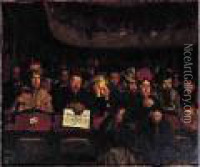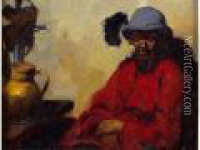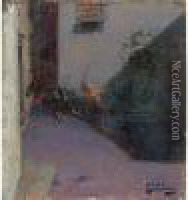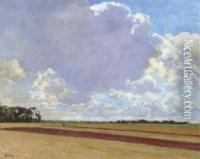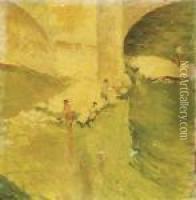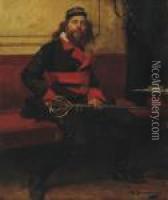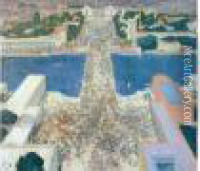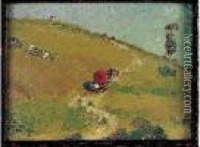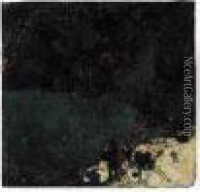Andre Devambez Paintings
André Devambez was a French painter, illustrator, and engraver born on May 20, 1867, in Paris, France. He was the son of Édouard Devambez, who owned a well-known printing company that specialized in fine art reproductions. From a young age, André showed a keen interest in art, which was nurtured by his father's business and the artistic environment he grew up in.
Devambez entered the École des Beaux-Arts in Paris, where he studied under the tutelage of prominent artists like Jean-Léon Gérôme and Léon Bonnat. His classical training at the École des Beaux-Arts provided him with a solid foundation in traditional artistic techniques, which he later incorporated into his own unique style.
In 1890, Devambez won the prestigious Prix de Rome for his painting 'Thetis Bringing the Armor to Achilles.' This award granted him a scholarship to study at the French Academy in Rome, a significant milestone for artists of the time, which allowed him to delve deeper into the study of classical art and Renaissance masterpieces.
Devambez was known for his genre scenes, portraits, and landscapes, but he was also celebrated for his satirical illustrations. His works often contained a humorous or ironic twist, which became popular in the French press. He was a regular contributor to magazines like 'Le Rire' and 'L'Assiette au Beurre,' where his illustrations offered a witty commentary on society and politics.
During his career, Devambez exhibited his works at the Salon des Artistes Français, where he received numerous awards, including a gold medal at the 1900 Exposition Universelle in Paris. Aside from painting and illustration, Devambez was also known for his engravings, which demonstrated his exceptional skill and attention to detail.
As the First World War broke out, Devambez served as a war artist, documenting the events of the war through his art. His works from this period provide a visual record of the experiences and landscapes affected by the conflict.
André Devambez passed away on August 29, 1944, in Paris. His legacy as an artist is preserved in the collections of various French museums, including the Musée d'Orsay and the Musée de l'Armée. His contributions to French art, especially his illustrations and satirical works, have left a lasting impression on the art world, and he remains a respected figure in the history of French painting and graphic arts.
